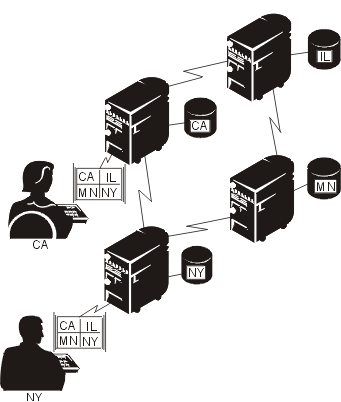DB2® Multisystem is a parallel processing technique that provides greater scalability for databases.
Using DB2 Multisystem, you have the capability to attach multiple iSeries™ servers (up to 32 servers) together in a shared- nothing cluster. (Shared-nothing means that each system in the coupled network owns and manages its own main memory and disk storage.) As soon as the systems are connected, database files can be spread across the storage units on each connected system. The database files can have data partitioned (distributed) across a set of systems, and each system has access to all of the data in the file. Yet to users, the file behaves like a local file on their system. From the user's perspective, the database appears as a single database: the user can run queries in parallel across all the systems in the network and have realtime access to the data in the files.

This parallel processing technique means that heavy usage on one server does not degrade the performance on the other connected systems in the network. If you have large volumes of data and the need to run queries, DB2 Multisystem provides you with a method of running those queries in one of the most efficient methods available. In most cases, query performance improves because the queries no longer run against local files, but run in parallel across several servers.
If you have not yet installed DB2 Multisystem, see Install, upgrade, or delete i5/OS™ and related software for information about installing additional licensed programs. To install DB2 Multisystem, use option 27 in the list of installable options for the operating system.